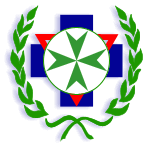|
|
|
|||||||||||||||
|
|
Animal-related
Injuries relevant to the Maltese Islands - Marine Annelida The Annalida or True Worms are Bilateria with elongated segmented bodies which are round or flattened in cross-section. The first two body segments contain the brain, the main sense organs and the mouth, while the anus is situated in the last segment. The skin has many glands that secrete slime, which is used by the worm for locomotion and for building tubes to live in.
Clinical Features: When picked up or disturbed, the hard bristles break off and stick in the skin. This initially results a severe itching sensation accompanied in a burning pain. Sometimes local inflammation, swelling, and slight loss of sensation follow. Treatment:As first aid, it is essential to wash the region with lots of fresh sea-water collected from a significant distance from the disturbed worm. An antihistamine cream or in its absence an oil-based lotion applied to the dried region of the itching would help reduce the symptomatology. |
|||||||||||||||
|
|







 Bristle worms [Class
Bristle worms [Class 